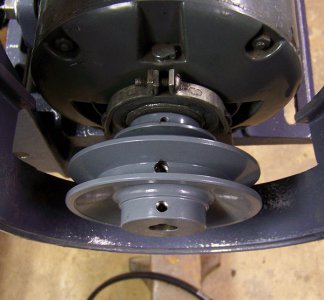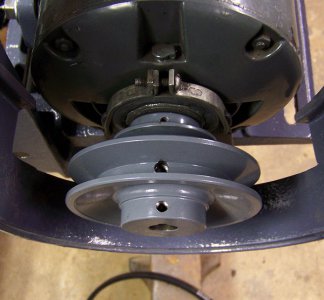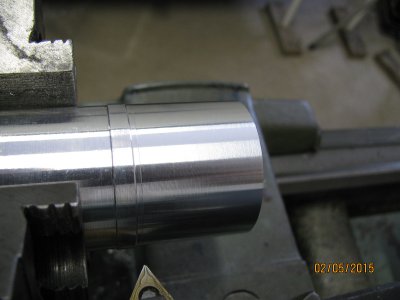- Joined
- Dec 14, 2013
- Messages
- 167
I leveled the lathe with one inch rubber pads and shims under the lathe legs and the drive box peg. That worked well but there was pulsing coming from the drive box. You could see the countershaft bearings rock back and forth on the side of the drive box when the lathe was running. The serpentine belt on the cone pulleys improved the pulsing considerably but you could still see some pulsing on the countershaft bearings. All of the pulsing was gone after I installed the link belt on the v-belt drive pulleys.
I purchased the link belt from Harbor Freight. It was 20 bucks with a 20% off coupon.
http://www.harborfreight.com/vibration-free-link-belt-43771.html
When I had the spindle out to install the serpentine belt I noticed a lot of play in the cone pulley. It looks like I'll have to replace the Oilite bearings in the spindle cone pulley. Does anyone have a source for these?
Redlineman, You're right. Yesterday, I read on the Logan Lathe sight that the flat countershaft pulley enabled easy belt changes between large and small pulleys.
Also, I've watched your Logan 200 Rescue thread since 2013. I'm glad to see you're back at it. As you can see, I'm finally getting back to working on my lathe. My delay falls into the "Life is what happens when you're busy making other plans" category. Anyway, I'll be interested to see how you feel your lathe runs once it is completed.
Mike B.
I purchased the link belt from Harbor Freight. It was 20 bucks with a 20% off coupon.
http://www.harborfreight.com/vibration-free-link-belt-43771.html
When I had the spindle out to install the serpentine belt I noticed a lot of play in the cone pulley. It looks like I'll have to replace the Oilite bearings in the spindle cone pulley. Does anyone have a source for these?
Redlineman, You're right. Yesterday, I read on the Logan Lathe sight that the flat countershaft pulley enabled easy belt changes between large and small pulleys.
Also, I've watched your Logan 200 Rescue thread since 2013. I'm glad to see you're back at it. As you can see, I'm finally getting back to working on my lathe. My delay falls into the "Life is what happens when you're busy making other plans" category. Anyway, I'll be interested to see how you feel your lathe runs once it is completed.
Mike B.




